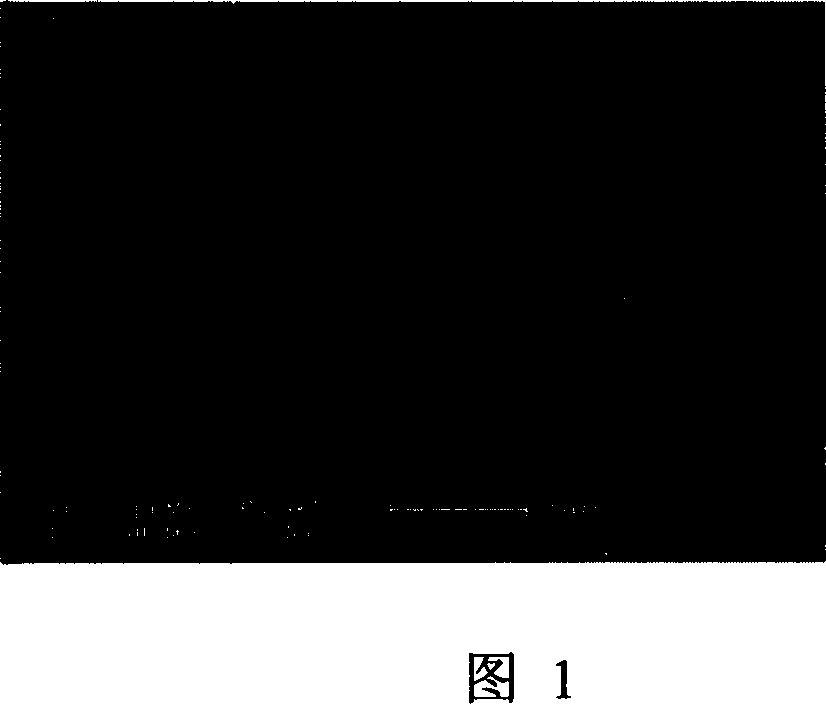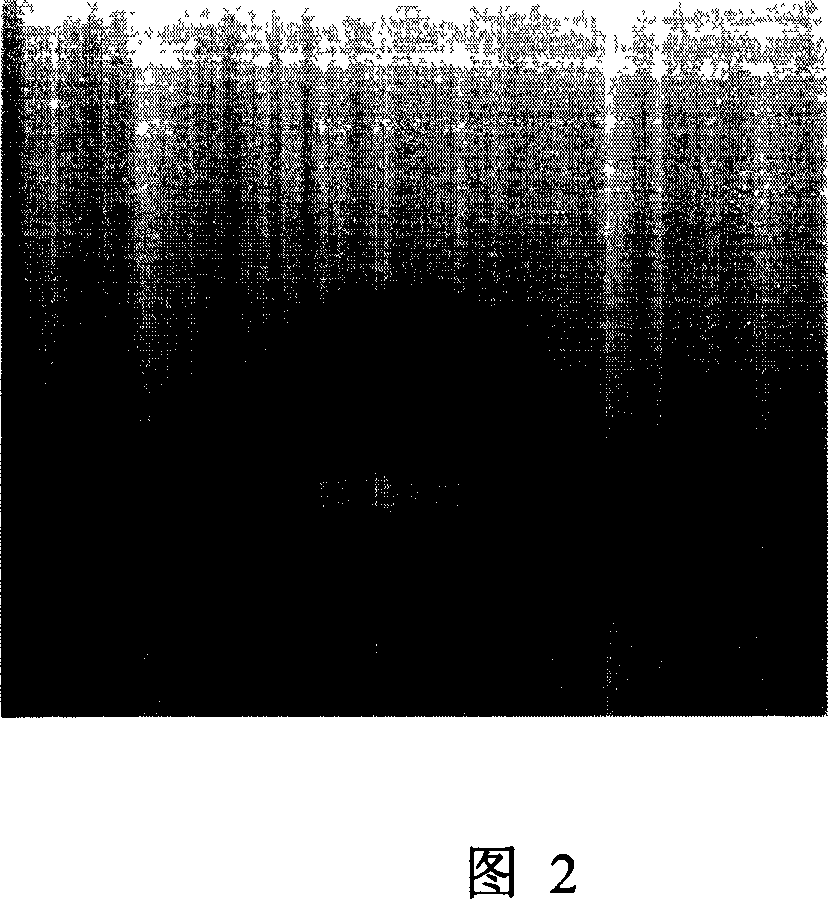Production of de-novo hydrophobic poly-pyrrolidone film
A hydrophobic and pyrrole membrane technology, applied in the direction of electrolytic process, electrolytic components, electrolytic organic production, etc., can solve the problems of incompetence and achieve the effect of reducing the degree of requirements
- Summary
- Abstract
- Description
- Claims
- Application Information
AI Technical Summary
Problems solved by technology
Method used
Image
Examples
Embodiment 1
[0035] (1) Using conductive glass (ITO) as the conductive substrate, the surface is coated with block copolymer polystyrene-polyisoprene-polylactic acid by pulling method, and the surface has block copolymer polystyrene-polylactic acid. Polyisoprene—the conductive substrate of polylactic acid film; the pulling speed is 5 mm / min, and the thickness is 200 nm;
[0036] (2) annealing the product obtained in step (1) at less than 0.1 atmospheric pressure and 150° C. for 15 hours, and cooling to room temperature;
[0037] (3) immerse the product obtained in step (2) in a mixed solution of NaOH, methanol and water with a concentration of 0.05M (the volume ratio of methanol and water is: 5:5), corrode for 40 minutes, remove polylactic acid, and Forming a PS-PI film with nanopores;
[0038] (4) With the product of step (3) as the working electrode, in the three-electrode system with the reference electrode saturated calomel electrode and the auxiliary electrode platinum wire, in the a...
Embodiment 2
[0041] Adopt the method of embodiment 1, utilize the method for spin-coating (rotating speed is 2000 rev / mins) to prepare the film of polystyrene-polyisoprene-polylactic acid on the surface of conductive glass, and under the condition of less than 0.1atm and 150 ℃ After 15 hours of treatment, a polystyrene-polyisoprene-polylactic acid / conductive glass composite electrode was obtained, and then treated in an alkaline solution to obtain a polystyrene-polyisoprene / conductive glass composite electrode. The thickness of the film 56 nm;
[0042] Use this electrode as the working electrode, use the saturated calomel electrode and the platinum wire as the reference electrode and the auxiliary electrode respectively, use a three-electrode system in 0.5M potassium chloride + 0.1M pyrrole solution, and scan 5 times at 0.1-0.8V , taken out, cleaned, dried, and tested for water wettability. Figure 2 shows the figure of water droplets on the surface of the polypyrrole thin layer, wherein th...
Embodiment 3
[0044] Adopt the method of embodiment 1, utilize the method for spin-coating (rotating speed is 2000 rev / mins) to prepare the film of polystyrene-polyisoprene-polylactic acid on the surface of conductive glass, and under the condition of less than 0.1atm and 150 ℃ After 15 hours of treatment, a polystyrene-polyisoprene-polylactic acid / conductive glass composite electrode was obtained, and then treated in an alkaline solution to obtain a polystyrene-polyisoprene / conductive glass composite electrode. The thickness of the film 56 nm;
[0045] Use this electrode as the working electrode, use the saturated calomel electrode and the platinum wire as the reference and auxiliary electrodes respectively, use a three-electrode system in 0.1M pyrrole solution, scan 2000 cycles at 0.1-0.65V for 920 minutes, take out , washed, dried, and tested for water wettability, wherein the contact angle is 95°, and the material is hydrophobic.
PUM
| Property | Measurement | Unit |
|---|---|---|
| Thickness | aaaaa | aaaaa |
| Thickness | aaaaa | aaaaa |
Abstract
Description
Claims
Application Information
 Login to View More
Login to View More - R&D
- Intellectual Property
- Life Sciences
- Materials
- Tech Scout
- Unparalleled Data Quality
- Higher Quality Content
- 60% Fewer Hallucinations
Browse by: Latest US Patents, China's latest patents, Technical Efficacy Thesaurus, Application Domain, Technology Topic, Popular Technical Reports.
© 2025 PatSnap. All rights reserved.Legal|Privacy policy|Modern Slavery Act Transparency Statement|Sitemap|About US| Contact US: help@patsnap.com


